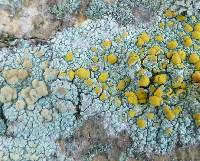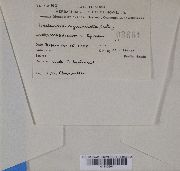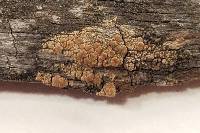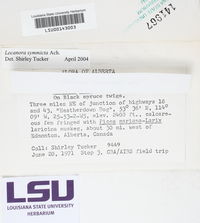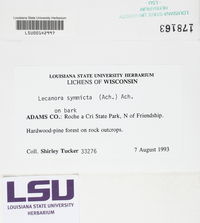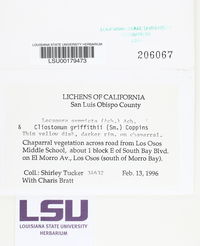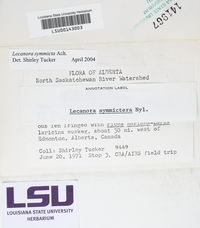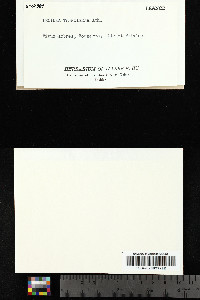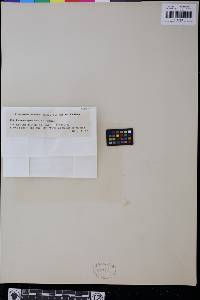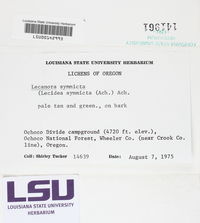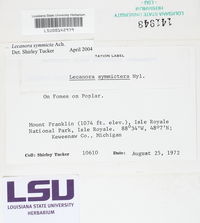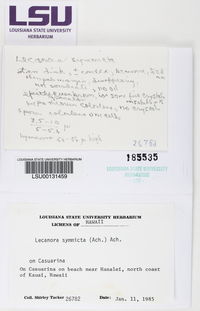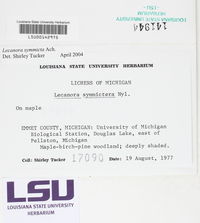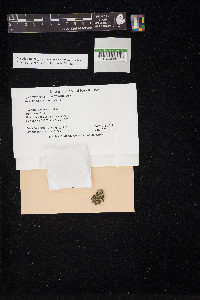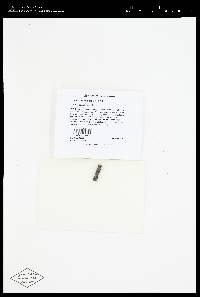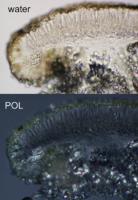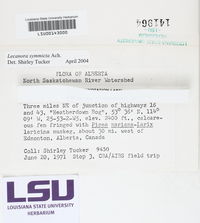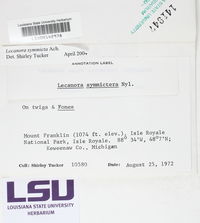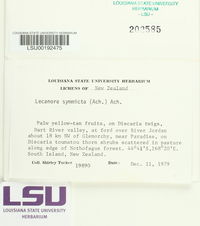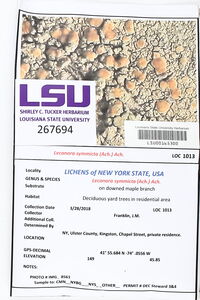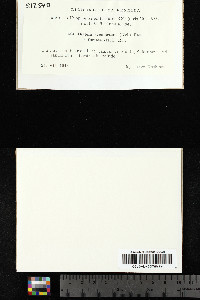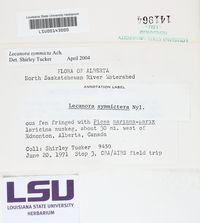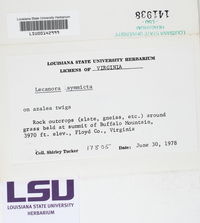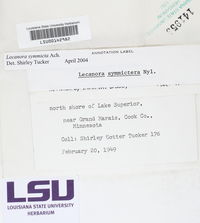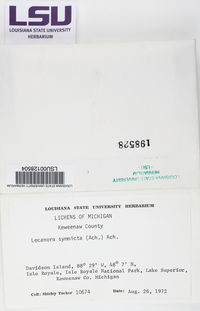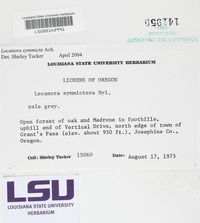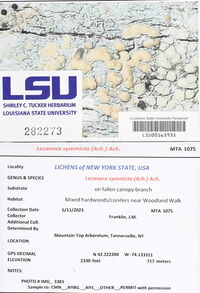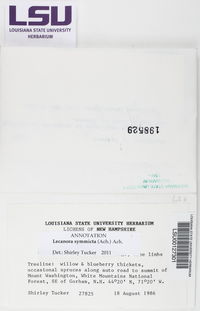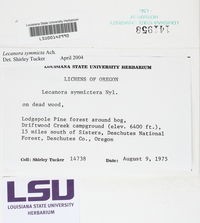
Consortium of Lichen Herbaria
- building a Global Consortium of Bryophytes and Lichens as keystones of cryptobiotic communities -
- Home
- Search
- Images
- Species Checklists
- US States: O-Z >
- US National Parks
- Central America
- South America
- US National Parks
- Southern Subpolar Region
|
|
|
|
Family: Lecanoraceae
[Biatora filamentosa (Stirt.) Walt. Watson, moreBiatora perobscura (Nyl.) Walt. Watson, Biatora symmicta (Ach.) A. Massal., Biatora symmicta f. ecrustacea (Nyl.) Oxner, Biatora symmicta f. symmicta (Ach.) Fr., Biatora symmicta f. trabalis (Ach.) Oxner, Biatora symmictella (Nyl.) Arnold, Biatora symmictella var. albida (Vain.) Räsänen, Biatora symmictella var. austroamericana Räsänen, Biatora symmictella var. cinctula (Nyl.) Räsänen, Biatora symmictella var. symmictella (Nyl.) Arnold, Biatora symmictera (Nyl.) Räsänen, Biatora symmictera f. alnicola (Vain.) Räsänen, Biatora symmictera f. ecrustacea (Nyl.) Hakul., Biatora symmictera f. fumosa (Vain.) Räsänen, Biatora symmictera f. hypaitema (Nyl. ex Brenner) Räsänen, Biatora symmictera f. junipericola (Vain.) Räsänen, Biatora symmictera f. lutea (Vain.) Räsänen, Biatora symmictera f. pumilionis (Rehm) Räsänen, Biatora symmictera f. saepincola (Ach.) Räsänen, Biatora symmictera f. sepincola (Ach.) Räsänen, Biatora symmictera f. symmictera (Nyl.) Räsänen, Biatora symmictera f. trabalis (Ach.) Räsänen, Biatora symmictera var. hypaitema (Nyl. ex Brenner) Räsänen, Biatora symmictera var. pumilionis (Rehm) Räsänen, Biatora symmictera var. symmictera (Nyl.) Räsänen, Lecanora symmicta var. symmictera (Nyl.) Zahlbr., Lecanora symmictera Nyl., Lecanora symmictera f. hypaitema Nyl. ex Brenner, Lecanora symmictera f. occidentalis Zahlbr., Lecanora symmictera f. symmictera Nyl., Lecanora symmictera var. aitema (Ach.) Nyl., Lecanora symmictera var. symmictera Nyl., Lecanora varia var. symmicta Ach., Lecidea perobscura Nyl., Lecidea symmicta (Ach.) Ach., Lecidea symmicta f. alnicola (Vain.) Vain., Lecidea symmicta f. biatorina (Eitner) Grummann, Lecidea symmicta f. denigrata (Flot. ex Körb.) Grummann, Lecidea symmicta f. fumosa Vain., Lecidea symmicta f. junipericola (Vain.) Vain., Lecidea symmicta f. lutea Vain., Lecidea symmicta f. pumilionis (Rehm) Vain., Lecidea symmicta f. saepincola (Ach.) Vain., Lecidea symmicta f. sepincola (Ach.) Vain., Lecidea symmicta f. straminea (Stenh.) Th. Fr., Lecidea symmicta f. subehrhartiana (Eitner) Eitner ex Grummann, Lecidea symmicta f. subfumosa Vain., Lecidea symmicta f. symmicta (Ach.) Ach., Lecidea symmicta var. aitema (Ach.) Th. Fr., Lecidea symmicta var. saepincola (Ach.) Hedl., Lecidea symmicta var. sepincola (Ach.) Hedl., Lecidea symmicta var. symmicta (Ach.) Ach., Lecidea symmicta var. symmictera (Nyl.) Zahlbr., Lecidea symmictella f. albocincta Szatala, Lecidea symmictella f. symmictella Nyl., Lecidea symmictella var. albida Vain., Lecidea symmictella var. cinctula (Nyl.) Vain., Lecidea symmictella var. symmictella Nyl., Lecidea symmictera (Nyl.) Vain., Lecidea symmictera f. alnicola Vain., Lecidea symmictera f. symmictera (Nyl.) Vain., Lecidea symmictera f. trabalis (Ach.) Vain., Lecidea symmictera var. junipericola Vain., Lecidea symmictera var. symmictera (Nyl.) Vain., Parmelia symmicta (Ach.) Hepp] |
Nash, T.H., Ryan, B.D., Gries, C., Bungartz, F., (eds.) 2004. Lichen Flora of the Greater Sonoran Desert Region. Vol 2. Thallus: crustose, warted-areolate, warts often coalescing to form a rimose crust; prothallus: occasionally present, white, around thallus and between areoles areoles: isodiametric in outline, sometimes irregularly incised or proliferating, 0.10-0.15 mm in diam., moderately to strongly convex, ecorticate but sometimes with a loose unorganised alga-free layer of various hyphae surface: yellowish or greenish beige to gray, dull, occasionally covered with terpenoid crystals, esorediate Apothecia: rounded to flexuose, sometimes tuberculate, single or in groups of 2-3, rarely densely crowded, sessile with a ±constricted base, 0.35-0.70 mm in diam. disc: yellowish beige to orange-brown or ochre, sometimes with an olive tinge, weakly to strongly convex or rarely flat, dull, usually with a fine white pruina, rarely epruinose margin: lacking or rarely present as a weakly prominent rim and soon excluded, without a parathecial ring amphithecium: lacking parathecium: biatorine, hyaline within, outer part with granules (soluble in K) like in the epihymenium, laterally 20-65 µm, basally 20-70 µm wide, with strongly gelatinized, branched, anastomosing, radiating hyphae with narrowly cylindrical lumina 0.7-1(-1.5) µm wide (lumina of apical cells 1-1.5(-2) µm wide) epihymenium: greenish ochre to orange-brown, (coarsely) granular, 5-15 µm thick hymenium: hyaline to pale yellow-brown, 35-50 µm tall; paraphyses: hyaline, weakly branched and anastomosing, with lumina basally 0.7-1 µm wide and apically 1-1.5 µm wide; subhymenium: hyaline, 25-55(-75) µm thick; hypothecium: hyaline, 30-90 µm thick asci: clavate, 8-spored ascospores: hyaline, simple or very rarely 1-septate, narrowly ellipsoid, (7-)9.2-12.1(-13.5) x (3-)3.5-4.4(-5.5) µm Pycnidia: not observed Spot tests: thallus K-, C-, KC-, P- Secondary metabolites: usnic acid, zeorin, arthothelin, ±thiophanic acid, ±4,5-dichloronorlichexanthone (tr.), norlichexanthone (tr.). Substrate and ecology: mostly conifer bark above 1950 m World distribution: North America and Eurasia Sonoran distribution: Arizona, southern California, and Chihuahua. Notes: Lecanora butyracea is very similar but has broader ascospores. Lecanora confusa and related species may resemble L. symmicta, because the apothecial margin is often excluded in older apothecia. Young apothecia of these species are, however, always marginate. |
|
|
|
Powered by Symbiota




